Authors: Chen Wei*, Jiachen Zou*, Dietmar Heinke, Quanying Liu
*Chen Wei and Jiachen Zou contributed equally to this work.
Date: Jan 18, 2024
Supervisor: Quanying Liu, Dietmar Heinke
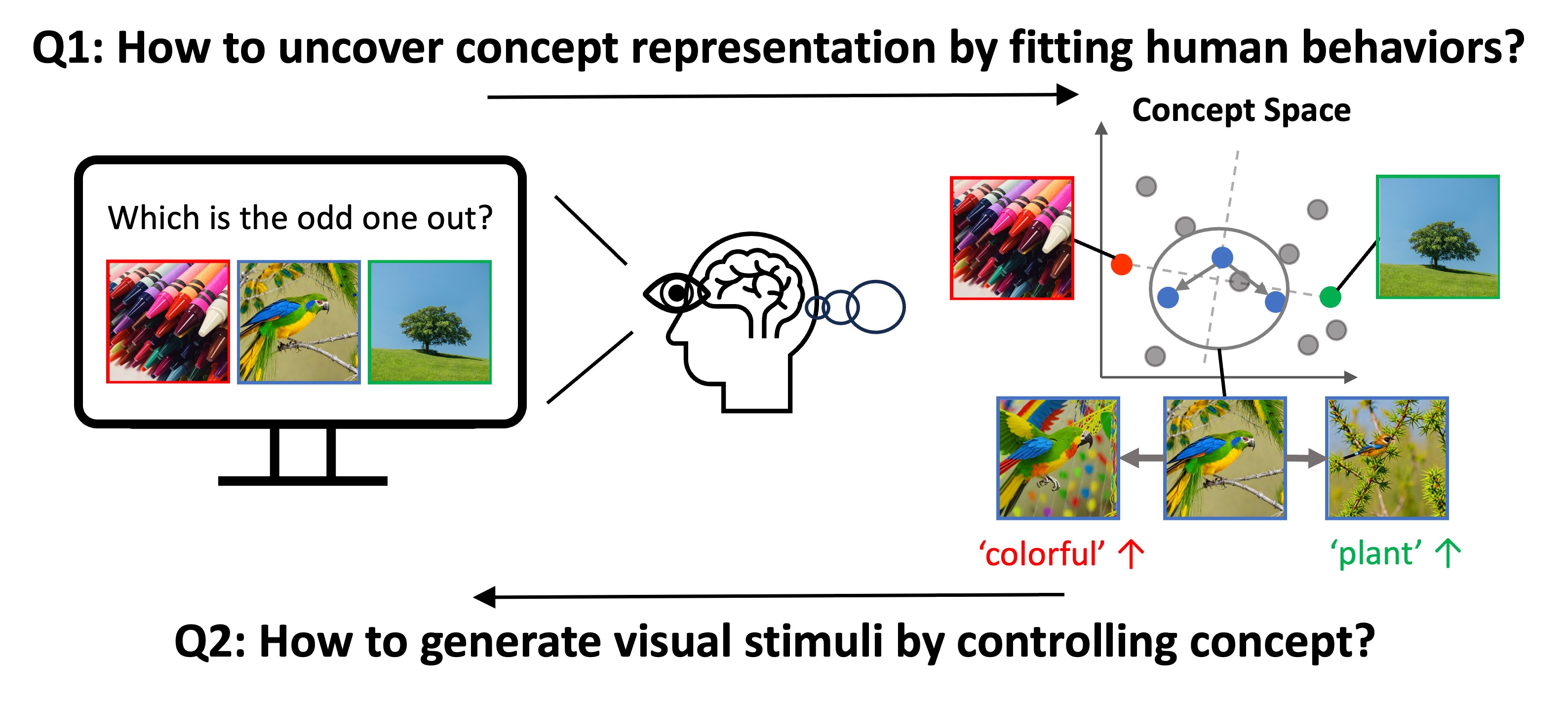
Introduction
Understanding how humans process visual objects and uncover their low-dimensional concept representation from high-dimensional visual stimuli is crucial in cognitive science. The Concept based Controllable Generation (CoCoG) framework addresses this by:
Extracting Interpretable Concepts: CoCoG includes an AI agent that efficiently predicts human decision-making in visual similarity tasks, offering insights into human concept representations.
Controllable Visual Stimuli Generation: It employs a conditional generation model to produce visual stimuli based on extracted concepts, facilitating studies on causality in human cognition.
CoCoG’s notable achievements are:
- High Prediction Accuracy: It outperforms current models in predicting human behavior in similarity judgment tasks.
- Diverse Object Generation: The framework can generate a wide range of objects controlled by concept manipulation.
- Behavioral Manipulation Capability: CoCoG demonstrates the ability to influence human decision-making through concept intervention.
Method
Concept Encoder for Embedding Low-Dimensional Concepts:
- Process: Begins with training a concept encoder to map visual objects to concept embeddings. This involves using the CLIP image encoder to extract CLIP embeddings, then transforming these into concept embeddings via a learnable concept projector.
- Training Task: Utilizes the ‘odd-one-out’ similarity judgment task from the THINGS dataset, predicting human decisions based on the similarity between concept embeddings of visual objects.
Two-Stage Concept Decoder for Controllable Visual Stimuli Generation:
- Stage I - Prior Diffusion: Adopts a diffusion model conditioned on concept embeddings to approximate the distribution of CLIP embeddings, serving as the prior for the subsequent generation stage.
- Stage II - CLIP Guided Generation: Leverages pre-trained models to generate visual objects from CLIP embeddings, utilizing the concept embeddings as a guiding condition for the generation process.
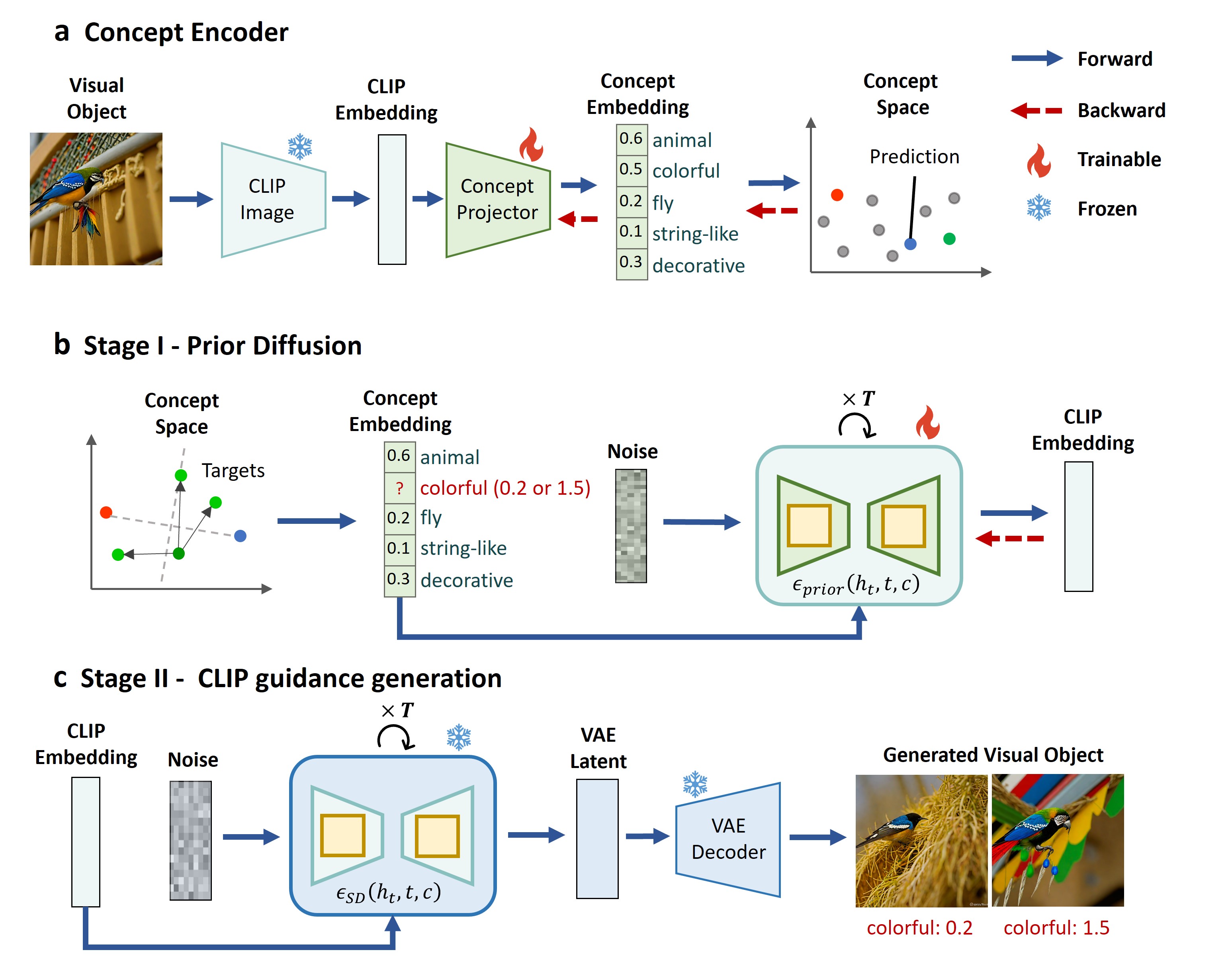
Results
Model Validation
Predicting and Explaining Human Behaviors:
- Accuracy: Achieved 64.07% accuracy in predicting human behavior on the THINGS Odd-one-out dataset, surpassing the previous SOTA model.
- Interpretability: Demonstrated through the activation of concepts within visual objects, aligning with human intuition and providing clear explanations of visual object characteristics.

Generative Effectiveness of Concept Decoder:
- Consistency with Concept Embedding: Generated visual objects are consistent with their concept embeddings, showcasing the model’s ability to conditionally generate visuals aligned with specific concepts.
- Control Over Diversity: By adjusting the guidance scale, the model can balance the similarity and diversity of generated visual objects.
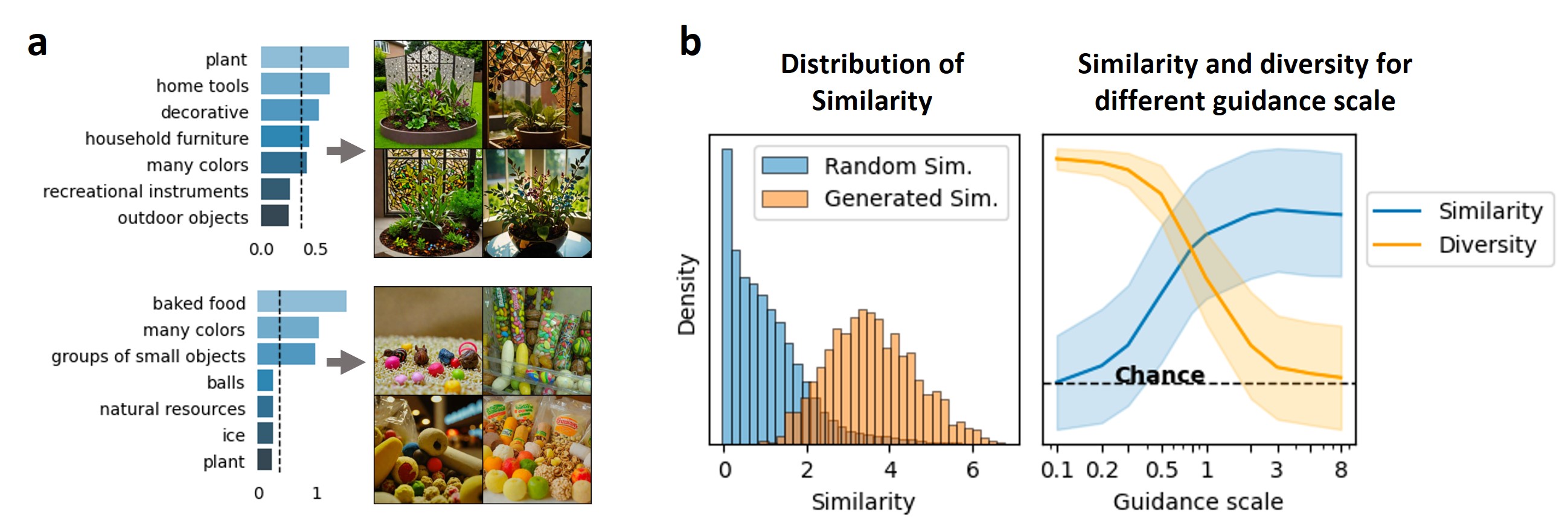
CoCoG for Counterfactual Explanations
Flexible Control with Text Prompts:
- Using the same concept embedding with different text prompts, CoCoG generates visual objects that retain the concept’s characteristics, demonstrating its utility in exploring counterfactual questions.
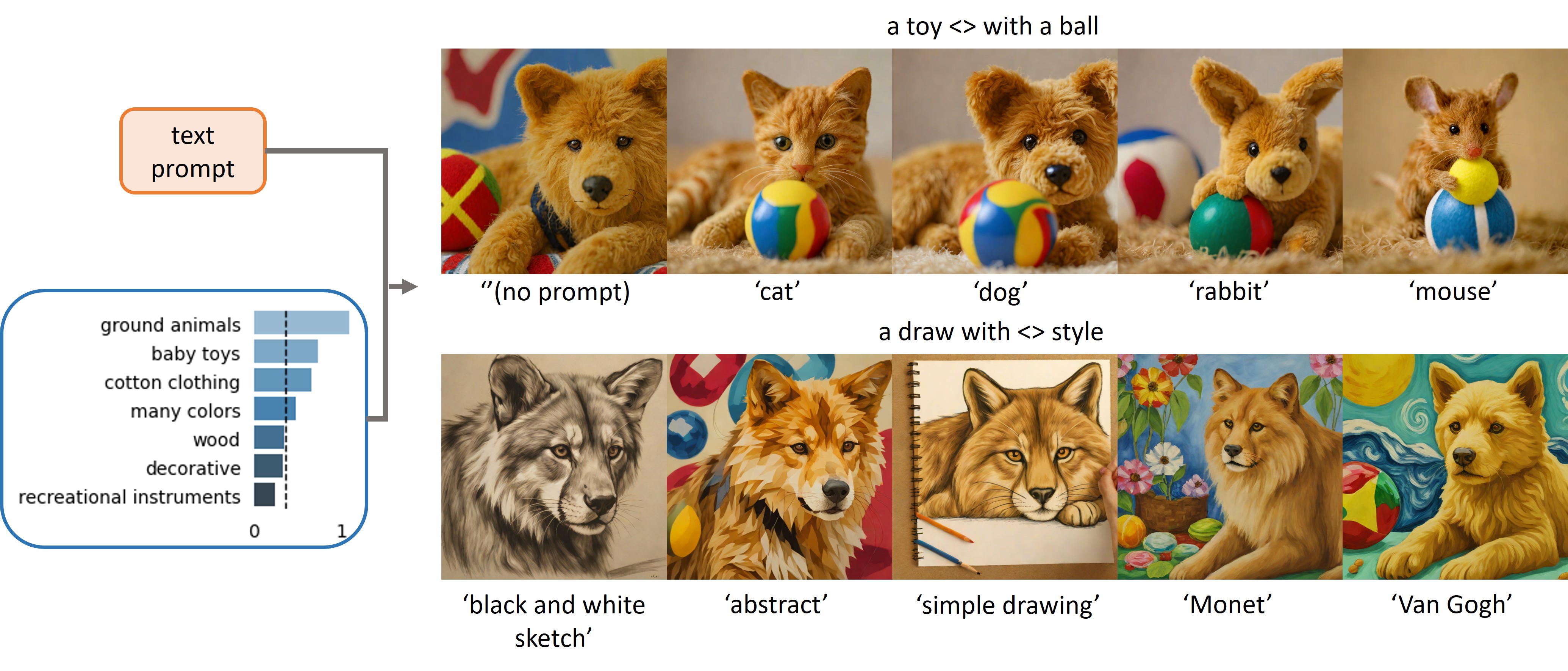

Manipulating Similarity Judgments:
- CoCoG can directly influence human similarity judgment by intervening with key concepts, offering a powerful tool for analyzing the causal mechanisms of concepts in human cognition and decision-making processes.
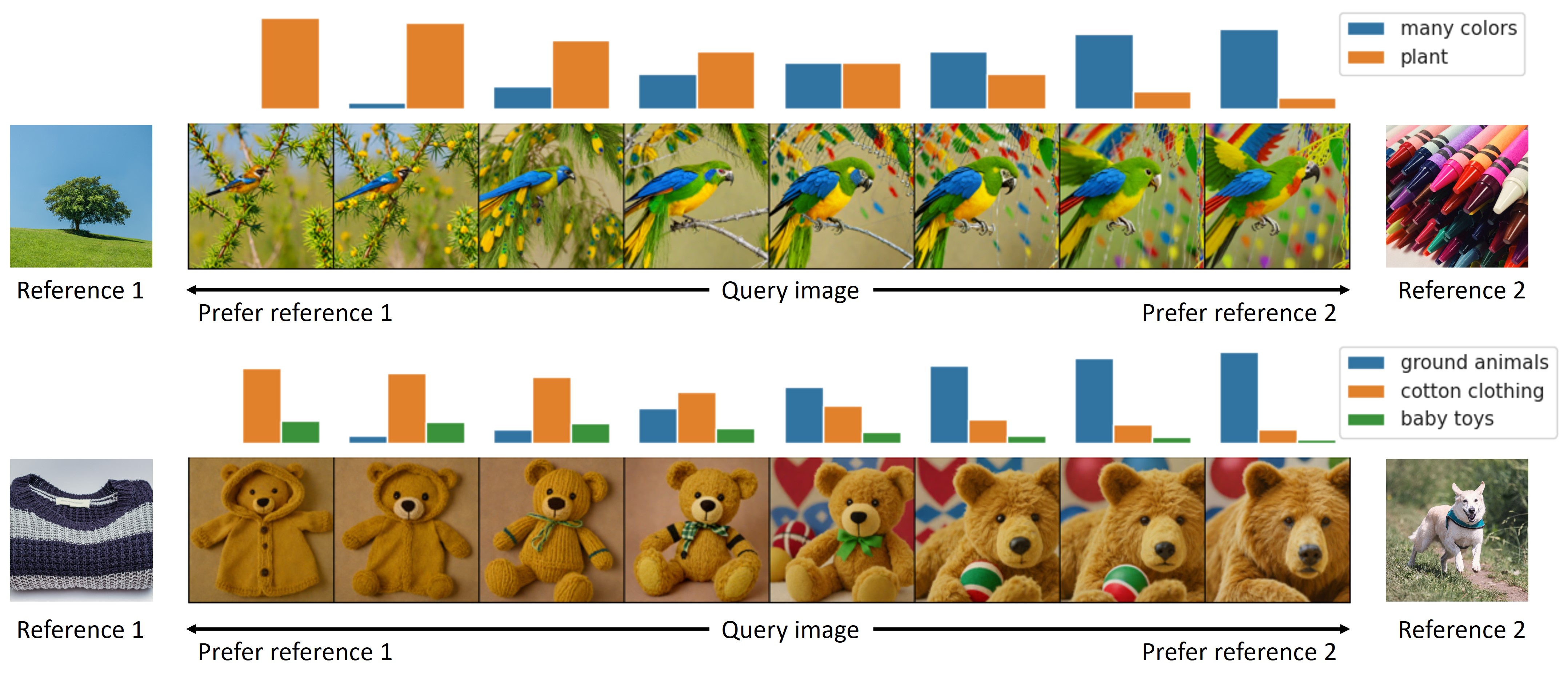
Conclusion
The CoCoG model innovatively combines AI and cognitive science, enhancing our understanding and interaction with human cognition:
AI and Human Cognition: Merges DNNs with human cognition, improving visual understanding and safety in AI-human interactions.
Cognitive Science Advancement: Offers a novel approach for cognitive research, enabling the generation of diverse stimuli to study human behavior and cognitive mechanisms.
Future Directions: Promises to align AI models with human cognition more closely and improve research efficiency through optimal experimental design.
For more detailed information, see the full paper here: CoCoG Paper.
GitHub Repository: https://github.com/ncclab-sustech/CoCoG
This paper has been published in IJCAI 2024.